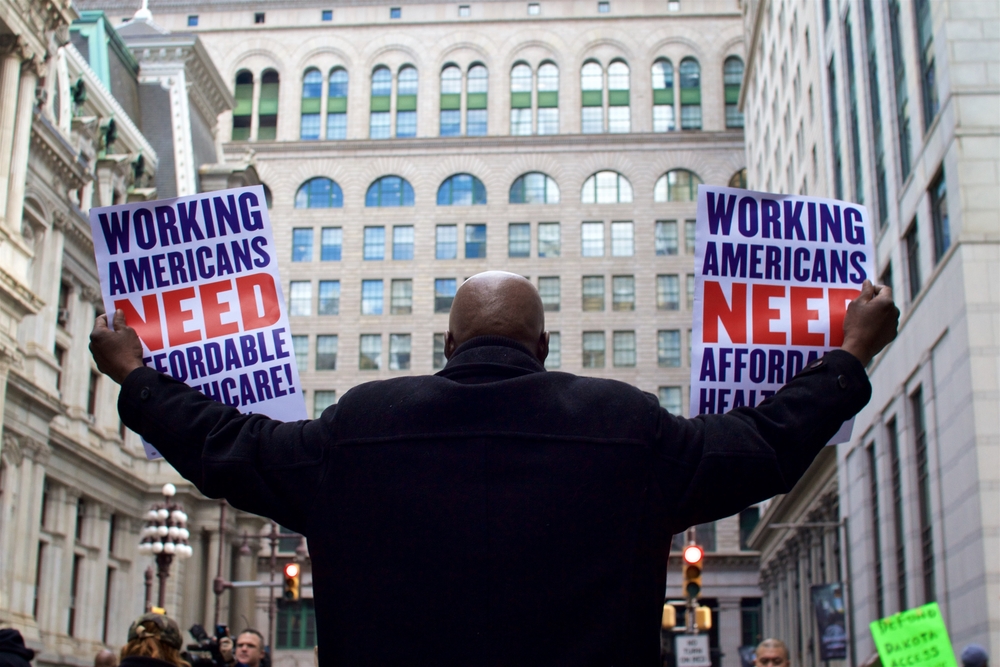The battle over America’s healthcare safety net just got real. House Republicans dropped their long-awaited Medicaid reform proposal late Sunday night, and while it skips the most extreme cuts some feared, millions of vulnerable Americans could still find themselves without healthcare or facing surprising new costs at the doctor’s office.
The midnight reveal
Like a surprise album drop that nobody asked for, Republican lawmakers quietly published their Medicaid plan when most Americans were settling in for the night. The proposal represents one piece of a massive bill aimed at implementing President Trump’s domestic agenda, complete with tax cuts and beefed-up military spending.
What makes this plan particularly noteworthy is what it doesn’t include. Gone are the most radical structural changes to Medicaid that ultraconservative Republicans have demanded for years. Instead, the legislation takes a more subtle approach to reducing the program’s reach without completely dismantling it.
The numbers nightmare
The financial implications are staggering. According to Congressional Budget Office figures circulated by Democrats on the House Energy and Commerce Committee, the legislation would slash federal spending by $912 billion over the next decade while pushing 8.6 million Americans into the uninsured category.
The lion’s share of these cuts—$715 billion—would come from changes to Medicaid and the Affordable Care Act. The remainder largely stems from changes in energy policy, including scrapping two Biden-era regulations affecting automobile pollution and efficiency standards.
The paperwork burden
Rather than taking a chainsaw to Medicaid funding, Republican lawmakers have opted for the death-by-paperwork approach. The legislation dramatically increases documentation requirements across the program, allowing states to check beneficiaries’ income and residency more frequently and permitting them to terminate coverage for people who don’t respond quickly enough.
This strategy isn’t new. During a brief experiment with similar requirements in Arkansas in 2018, about 18,000 people rapidly lost coverage. Many simply couldn’t navigate the bureaucratic maze or didn’t understand what was being asked of them until it was too late.
The pocket pain
If keeping up with paperwork wasn’t challenging enough, the legislation would also hit many Medicaid recipients in their wallets. For the first time, beneficiaries earning above the federal poverty limit—around $15,650 for a single person—would face $35 co-payments for many medical services.
This might not sound like much to middle-class Americans used to commercial insurance, but for people living just above poverty level, such costs can mean choosing between medical care and other necessities like food or electricity.
The working requirement
Perhaps the most controversial element is a new work requirement for poor, childless adults. To maintain coverage, these individuals would need to document at least 80 hours of work every month—a less flexible version of requirements that previously caused massive coverage losses when implemented at the state level.
Interestingly, this provision has gained support from some unexpected quarters. Even Republican Senators who typically oppose Medicaid cuts, including Susan Collins of Maine and Josh Hawley of Missouri, have expressed openness to work requirements. President Trump, despite previously pledging to avoid Medicaid cuts, has also endorsed this policy.
The elder impact
The Congressional Budget Office analysis suggests the paperwork changes alone would cause 2.3 million people to lose Medicaid coverage, with poor older and disabled people bearing the brunt. Many of these individuals are also enrolled in Medicare but rely on Medicaid to cover co-payments they simply cannot afford.
While the budget office estimates that only 600,000 more Americans would lose all forms of health insurance, many more would struggle to afford necessary medical care without the supplemental coverage Medicaid provides.
The state squeeze
State budgets will feel the pinch too. The legislation freezes all provider taxes at current rates and prevents states from using accounting strategies that have long helped them secure additional federal funding.
The bill also takes direct aim at Democratic-controlled states that fund health coverage for undocumented immigrants. States like California, New York, and Washington would face significant funding cuts unless they eliminated their state programs that enroll undocumented people.
The political balancing act
This legislation represents a delicate political tightrope walk for Republican lawmakers. They needed to find $880 billion in savings over a decade to satisfy fiscal hawks while appeasing more moderate members whose districts have high Medicaid enrollment.
The House Energy and Commerce Committee is scheduled to meet Tuesday to debate and refine the package, beginning what promises to be a contentious journey through Congress.
The personal impact
Beyond the numbers and politics lies a human reality. For millions of Americans living on the economic margins, Medicaid represents their only access to healthcare. Many work in low-wage jobs without benefits, care for family members, or struggle with health conditions that limit their employment options.
The proposed changes would add new barriers between these vulnerable Americans and healthcare access, with predictable consequences. When people lose coverage, they often postpone necessary care until conditions worsen and require emergency intervention—ultimately costing the system more.
The reproductive target
Not content with general Medicaid reform, lawmakers included a provision aimed squarely at Planned Parenthood. The bill would prevent Medicaid from funding any health providers that also offer abortion services, similar to language Republicans tried to insert into their unsuccessful 2017 attempt to repeal the Affordable Care Act.
This change would affect access to routine healthcare services like cancer screenings and contraception for many low-income women, particularly in rural areas where healthcare options are already limited.
The marketplace makeover
Beyond Medicaid, the legislation would significantly alter how the Affordable Care Act’s insurance marketplaces function. The changes include shorter enrollment periods, stricter income verification, restricted access for DACA recipients, and more difficult auto-renewal processes.
Combined, these changes would likely reduce enrollment in marketplace plans, particularly among younger and healthier individuals who might see the additional paperwork as not worth the effort—potentially destabilizing the risk pools these markets depend on.
The road ahead
As the legislation moves toward committee consideration this week, the real battle is just beginning. The proposal must clear the House and then navigate the Senate, where the Republicans’ razor-thin majority leaves little room for defections.
For millions of Americans who depend on Medicaid for their healthcare needs, the stakes couldn’t be higher. While the most extreme cuts have been avoided for now, the proposed changes would still fundamentally alter a program that has served as a critical safety net for the nation’s most vulnerable citizens since 1965.















